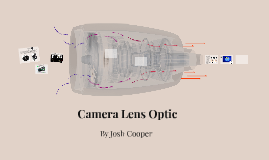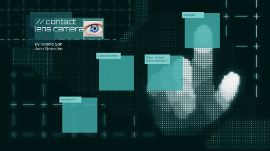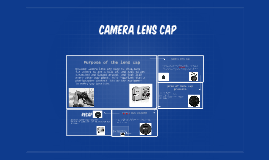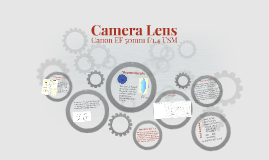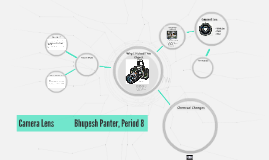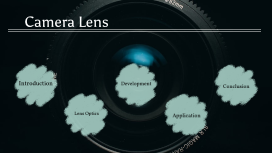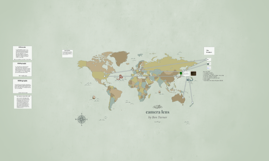Camera Lens
Transcript: Camera Lens By Mok Kai Yin 20156725 Yashita Sharma 20152391 Luo Hao 2015786 What are lenses? Introduction A curved piece of glass, plastic, or other transparent material, used in cameras, glasses, and scientific equipment, that makes objects seem closer, larger, smaller, etc. Definition by Cambridge Dictionary How lenses work? Lens Optics Kinds of lenses Two main kinds Concave Convex Lens Prime lens → Fixed focal length Zoom lens → Range of focal lengths Aspherical lens → Corrects spherical aberration Crown and flint glass → Corrects chromatic aberration Materials used 1. Optical glass - Most commonly used 2. Optical plastic - Refraction index depends on degree of polymerization Resin - Not as popular due to many disadvantages Materials Rays 1. Meridional 2. Paraxial 3. Skew - never intersects lens axis Rays Development What happen with lenses and cameras? Dallmeyer Rapid Rectilinear Produced in 1866-1890 John Henry Dallmeyer 1866-1890 Dallmeyer Rapid Rectilinear Design Post world war 2 Lenses were massively required in the film industry. Propaganda Post WWII Camera Now Digital single lens reflex cameras (DSLR) Lens design Design Nowadays How Lens design is analyzed by computer E.g. OpticalSoftware.NET Skew ray tracing up to 50 billion times faster Companies Who Canon Nikon Sony etc... What kind of lenses? Fisheye <14mm Wide angle 14mm - 35mm Standard 35mm - 85mm Short telephoto 85mm - 135mm Medium telephoto >135mm Super telephoto >300mm What Application of cameras Application Photograph Take photos : Phone lens Recording : video camera Living use Microscope Observe small objects and cells Science use Lab automation A more efficiency system to provide lower overall cost Medical endoscope camera Medical Use Nuclear imaging To visualize the surgery or diagnostic procedure on a larger screen Enables visualization of organ and tissue structure as well as function Conclusion Conclusion Camera lens has make a great contribution in the human history, in science and art. After the long development of camera lens, it can be used in the multiple ways and cannot separate whit human's basic life. Q&A MLA Citations Barreto, Joao, et al. "Automatic camera calibration applied to medical endoscopy." BMVC 2009-20th British Machine Vision Conference. The British Machine Vision Association (BMVA), 2009. “Lens.” Cambridge Dictionary, 2021, dictionary.cambridge.org/dictionary/english/lens. Kingslake, Rudolf, and Barry Johnson. Lens design fundamentals. academic press, 2009. Kingslake, Rudolf. A history of the photographic lens. Academic Press, 1989. https://www.alliedvision.com/en/applications/medical-life-sciences/#c3247 Works Cited






